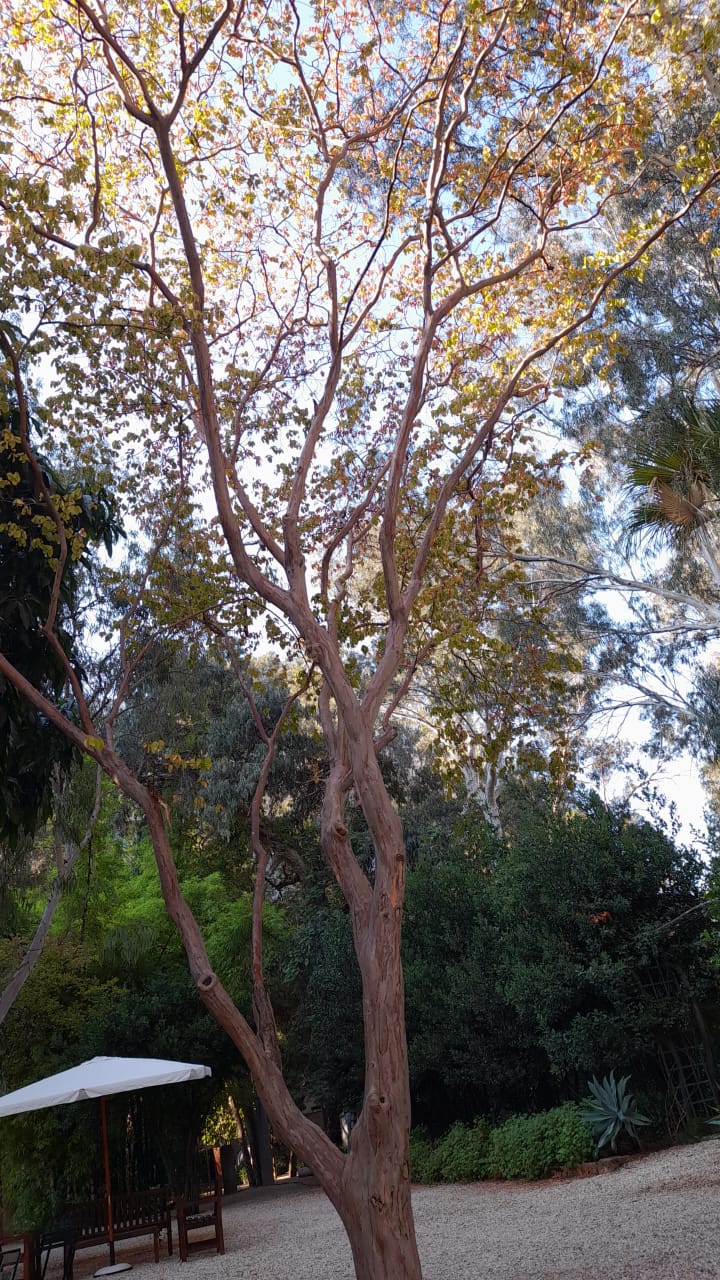Visit Us / Garden
The henna tree
Le henné - حناء
Description
This shrub with its slender trunk produces small oval leaves that carry the famous dye. Like the olive tree, henna tolerates an arid or semi-arid climate. Native to the coast of North Africa, the Near East and parts of South Asia, it has since spread to the southern hemisphere, including other parts of Africa and northern Australia.
Henna dyeing is used in Indian and Islamic culture. According to tradition, henna protects against the evil eye and brings good luck to those who use it to decorate their hands. This decoration is part of the henna ceremony. It is said that henna was also used to cool the palms of hands and feet from the desert heat.
To make henna, the leaves have to be dried and grounded into a paste. As well as dyeing, the tree produces small fruits and pale pink or white flowers.
The henna trees in the garden are survivors, most having been cut down during the war for their wood by the militia who occupied the property.

Poem
The Sequoia
(The story of destruction applies to the garden’s henna trees)
Driving through the monstrous tunnel
Piercing through the sequoia’s trunk,
No one thinks of the criminals
Who cut the majestic tree
Failing to appreciate this marvel of greenery.
Nor did these barbarians kneel to the altar
To thank the gods for their creation.
Instead they dug a hole that pierced the tree.
Like this blind and destructive vandal,
How often have we destroyed
What is most sacred to us in life?
Happy were the days when the honest love
Of the primitive understood however simply
That in the beast is a soul and in the tree a spirit!…
Published in La Petite Cosmogonie Sentimentale, Éditions de le Revue Phénicienne, 2004.



